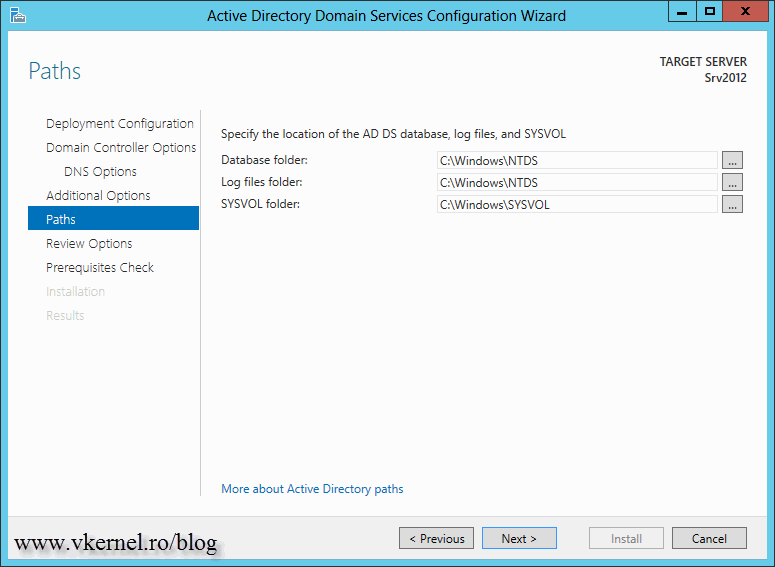
- #Shutdown client pc from domain controller full
- #Shutdown client pc from domain controller windows 10
- #Shutdown client pc from domain controller pro
- #Shutdown client pc from domain controller trial
Sign out of your machine at the sign-in screen, select “Other” user.Įnter the machine name followed by a backslash and then your local user account, as shown below. Log into your local account while your computer is joined to a Domain. If a need arises where you need to leave the domain or log into your local account, you can easily do so. Leaving the Domain or log into your local account This is because the server centrally manages your computer. You will notice that once you are connected to the Domain, your About setting no longer lists options presented before. Enter your password, and you will now be logged onto your Domain. When the sign-in screen appears, you will notice the DOMAIN\User account is displayed.

Wait while your computer is authenticated on the Domain.Īnd then, you’ll need to restart to complete the process. You should have the correct domain info, but if not, contact your Network Administrator.Įnter account information that is used to authenticate on the Domain and then click OK.
#Shutdown client pc from domain controller windows 10
On the Windows 10 PC, go to Settings > System > About, then click Join a domain.Įnter the Domain name and click Next. Join a Windows 10 PC or Device to a Domain
#Shutdown client pc from domain controller pro
A computer running Windows 10 Pro or Enterprise/Education editions.A user account on the Domain, this information you can get from your Network Administrator.
#Shutdown client pc from domain controller trial
Download a free trial and try it for yourself.To join a Domain, you must first ensure you have the following information and resources: The AD Pro Toolkit includes 13 tools to simplify Active Directory and computer management. Want an easy way to check the uptime and last boot date on all computers? Then check out the tool below. restart-computer (get-content c:\work\computers.txt) Example 4: Use PowerShell to shutdown down two computers Stop-Computer -ComputerName "Server01", "Server02" Just list all the computers you want in a text file and add that to the PowerShell command. This is handy if you have several computers to restart. Stop-Computer -ComputerName REMOTE_COMPUTER_NAME -Force Example 3: Use PowerShell to restart a list of computers Use the -Force to force a shutdown even if a user is logged on. This command will shutdown a remote computer. Restart-Computer -ComputerName REMOTE_COMPUTER_NAME -Force Example 2: Use PowerShell to shutdown a computer The -Force option will force a restart even if a user is logged on. This command will immediately restart a remote computer. Example 1: Use Powershell to restart a computer There is no option to prompt users with a custom message or provide a countdown. The downside to PowerShell is it doesn’t have as many options as the shutdown command. Here are a few examples of how you can restart or shutdown computers with PowerShell. shutdown /l /m\\pc2 Restart or Shutdown with Powershell If you just want to log a user off the remote computer use this command. If you want a longer countdown just specify the seconds /t 60 Example 4: Log user off remote computer If you want to immediately restart with no countdown or message use this command. Example 3: Immediate Restart no Countdown shutdown /m \\pc2 /c "The IT department has initiated a remote restart on your computer"īelow is the pop up on the remote computer with the custom message. You may want to display a custom message to the logged on users, to do that just use the /c command. The pop up below is what a Windows 10 system will display. Example 1: Restart Remote Computerīy default, this will prompt the remote computer and give it about a minute before it restarts. I’ll be using the /r switch in these examples, you can change them to /s to shutdown instead of restart. In these examples, I’ll be on PC1 and will initiate a remote restart or shutdown on PC2. Now let’s move on to some examples Restart or Shutdown Examples with Command Line c “comment” – Message to display on the screen before restart or shutdown t xxx – Set the time out period before shutdown to xxx seconds m \\computer – Specify the remote computer There are several command line switches, below I list the most useful options.
#Shutdown client pc from domain controller full
To view the full list of command options type shutdown /? in the CMD window.

To use this command just open the windows command prompt and type shutdown. Windows systems has a built in shutdown command that can be used to restart or shutdown local and remote computers. The first method uses a built in Windows command and the second method uses PowerShell. In this tutorial, I’ll show you two easy methods for rebooting and shutting down remote computers. There will be times as a Windows Administrator when you will need to reboot or shutdown a remote computer or server.


 0 kommentar(er)
0 kommentar(er)
